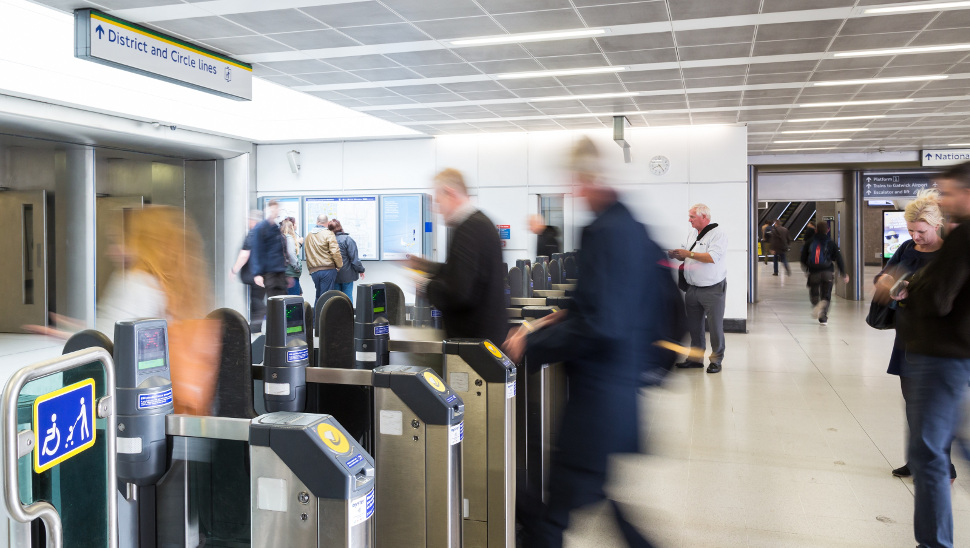Uber wants to gain more users by getting people to stop using Uber

Starting April 30, Londoners will be able to view public transport information alongside fares and wait times on the Uber app, to see if taking the tube is quicker or cheaper than waiting.
The first, and perhaps only, think you’d think after hearing that news is 'Wouldn’t that result in fewer people getting Uber rides?' Public transport is often a lot cheaper than hailing an Uber, even in an expensive city like London, and if the Uber app presents its users with a choice, they’ll likely choose the cheaper option.
Uber’s pitching the function as a way to reduce car ownership, as well as clean up London’s air, but as with any corporate attempt at philanthropy, you have to take those claims with a massive pinch of salt. Instead, Uber could be playing the long game to assert its ride-hailing dominance for good.
What’s changed with Uber?
When the London Public Transport update rolls out to Uber users across London, a new option will be available once you select a destination, which will use information from Transport for London (TfL) to tell you the best public transport route to get to where you want to be.
The app will aggregate information from buses, trains, trams, shuttles, the London underground, rail lines and even boats on the river Thames to tell you the quickest, or cheapest, way of getting to your destination. The app will also provide walking directions between stations if you need to transfer at any point.

The purpose of this all is to replace your car with your phone – if Uber can’t get you hailing cabs, it at least wants you to use its app for however you will travel. The company is also presenting it as an ‘eco-initiative’, so prospective Uber customers could get the bus or tube instead of getting a driver to ferry them about the city.
Of course, getting your customers to use a competing service isn’t a great business strategy, but the London Public Transport feature is likely just the first step in a longer plan by Uber.
Sign up for breaking news, reviews, opinion, top tech deals, and more.
This kind of service is already offered by Uber in Denver, in the US, but London has a population over 11 times higher, so it’s a whole new ball game when it comes to the amount of information the app is required to process.
Patching up a rocky relationship
Over the past few years, Uber has been fighting hard to continue operations in London. It’s had to defend itself against a wave of accusations of unlawful behavior in the way it pays and manages its staff, unsafe environments for passengers in vehicles, and tough working environments for its drivers.
At times it’s looked like Uber drivers wouldn’t be able to operate in London, and while the company has managed to overturn any ban presented so far, it’s still on rocky grounds with the Mayor of London’s office and TfL.
However by encouraging users to take public transport when possible, Uber is extending an olive branch to those parties, and showing them that it’s happy to work with the city’s entities to do what’s best for the customers.

If TfL and the Mayor’s office accept this olive branch, and tensions between the parties relax, it could be hugely beneficial for Uber – an end to, or relaxing of, the hostilities and legal proceedings could save it a lot of money and hassle.
Uber is using TfL’s live travel information as part of the update, but over 675 other apps do too, so that doesn’t point to a special relationship in any way.
In addition, while it’s certainly a valuable gesture on Uber’s part, it’s not necessarily one that could cause the ride-hailing firm much difficulty. If you’re visiting the app it’s because you already know you want to get a lift to your destination, and you’d visit others like Google Maps or CityMapper if you wanted to know which tube line to get. The potential number of lost customers is probably, in reality, pretty small.
Becoming the go-to travel app
As well as relaxing hostilities, Uber’s addition of public transport information to its app could be part of a long game the company has begun – one to transform the Uber app from a simple ride-hailing app, into the go-to service for intra-city travel.
If Uber can get people to use its app as a way to find any kind of transport, and draw users away from Google Maps and CityMapper for these functions, it can slowly start to increase its market share, and open itself to a new audience, who typically wouldn’t hail an Uber.

This would increase Uber’s user base significantly, and a fair chunk of that audience would likely start using the ride-sharing part of the app if the various taxi options were presented alongside public transport choices, especially for journeys with many transfers or for customers in a rush.
Other apps work similar – Google Maps, for example, lets you explore different modes of transport for a journey including walking, driving, public transport, or hailing a cab using an app. Presumably Uber’s app will work similarly in the future, but unlike Google, Uber will make money off customers who decide to catch a cab.
Of course, this is all speculation and guesswork – but it makes no business sense for Uber to intentionally try to cut down its user base, so the update is likely part of a larger plan the company has.

Tom Bedford joined TechRadar in early 2019 as a staff writer, and left the team as deputy phones editor in late 2022 to work for entertainment site (and TR sister-site) What To Watch. He continues to contribute on a freelance basis for several sections including phones, audio and fitness.